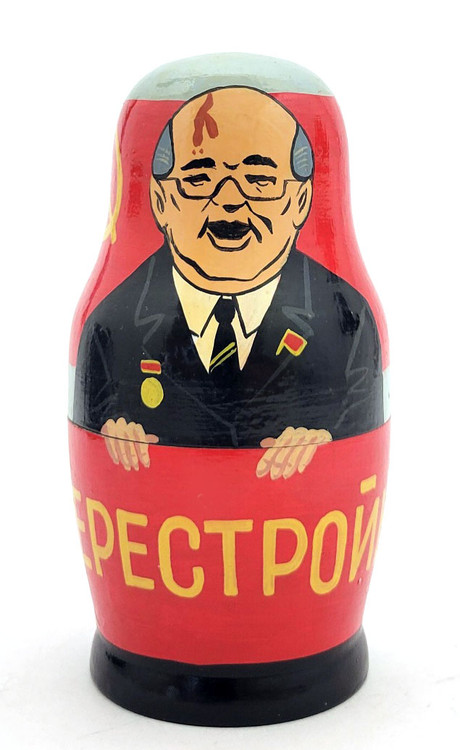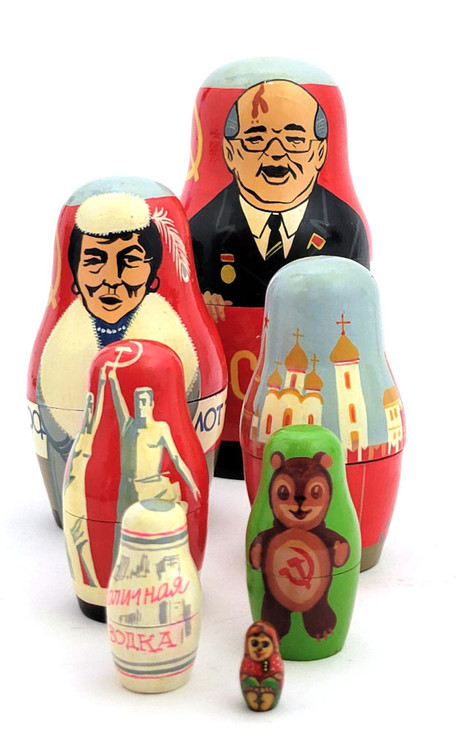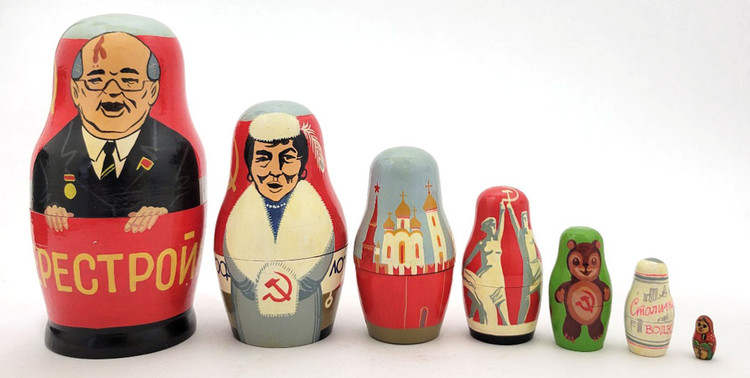Product Description
Gorbachev and Soviet Promo Matryoshka Doll. 7 pieces, 5¾" down to tiny. Fully hand painted. In near fine condition with no cracks. 1 only.
One of the more unusual, or perhaps original, Gorby dolls we've ever seen. It starts off in typical fashion with Mikhail Gorbachev in a brown suit with flag pin and medal standing against a large red banner with the word Перестройка (Perestroika, i.e, Reform Movement), and behind him another banner with a yellow hammer and sickle and star. After him, and keeping with the red banner theme, comes an indigenous woman in fur with the word Аэрофлот (Aeroflot, the, at the time, Soviet Airlines) in front of an airplane and more hammers, sickles and stars. The third piece is the Kremlin and its towers. Next is the Soviet statue of a pair holding a hammer and sickle: "Worker and Kolkhoz Woman", created for the 1937 World's Fair in Paris by Vera Mukhina. On the back is CCCP and a star. The next piece is a smiling bear cub with a hammer and sickle on its belly and more CCCP and a star. Next to last is a representation of a Stolichnaya Vodka label and "Made in USSR" in English. The last piece is a tiny matryoshka girl. The doll is actually signed in Russian by the artist, but not dated. We estimate that it was painted pre-1991, perhaps 1988-1990, a souvenir representation of Soviet symbols and goods.
In March of 1990, the Congress of People’s Deputies elected General Secretary Mikhail Gorbachev as the new president of the Soviet Union. The election was a victory for Gorbachev, but it revealed serious weaknesses in his power base that would eventually lead to the collapse of his presidency in December of 1991. He was facing criticism from reformers and communist hard-liners. The reformers (Boris Yeltsin) criticized him for the phlegmatic pace of his reform agenda. Communist hard-liners saw Gorbachev’s retreat from Marxist principles as betrayal. So Gorbachev amended the Soviet constitution and wrote a section establishing more power to the president, a position previously largely symbolic.















